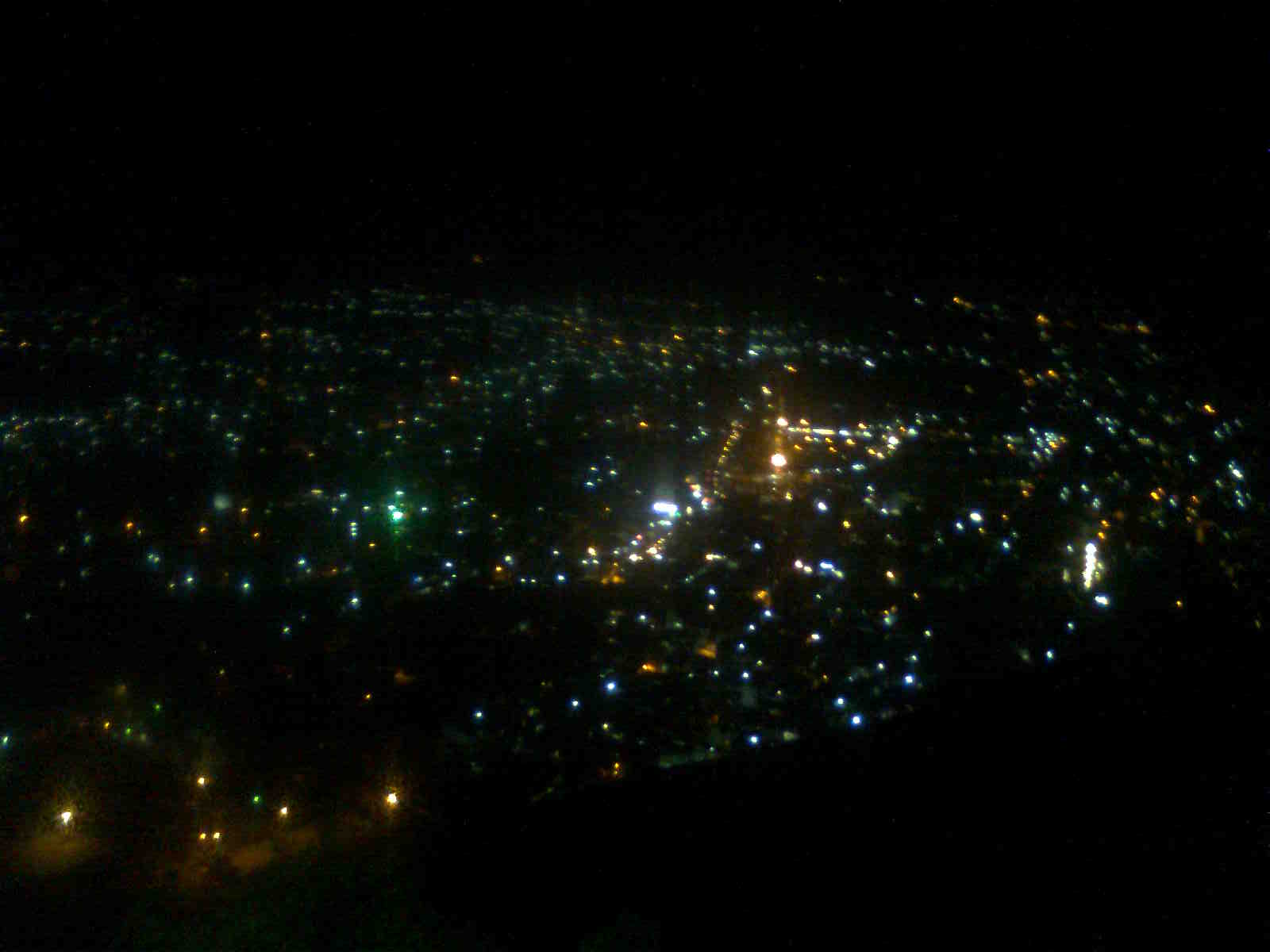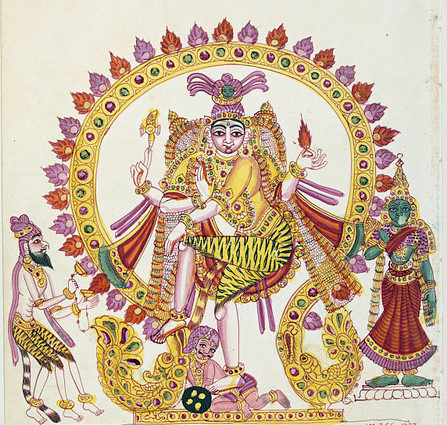|
Nagagiri
Arthan─Βreeswar─Β temple aka Thirukodim─Βda Chenkundr┼τr(Tamil language, Tamil: ωχνωχ┐ωχ░ωψΒωχΧωψΞωχΧωψΛωχθωχ┐ωχχωχ╛ωχθωχγωψΞ ωχγωψΗωχβωψΞωχΧωψΒωχσωψΞωχ▒ωψΓωχ░ωψΞ) is an ancient Hinduism, Hindu temple, located in Tiruchengode, in the southern Indian state of Tamil Nadu. The temple is dedicated to Ardhanarishvara, Arthan─Βreeswar─Β, a form of the Hindu deity Shiva combined with his consort Parvati. Also called as''M─Βdhorub─Βgan'' and ''Ammaiyappan'' (mother-father). The famous Chenkottu Velavar Temple, dedicated to Lord Kartikeya, Murugan, is also situated on the same hill. History It is one of the shrines of the 275 Paadal Petra Sthalams praised in the Thevaram hymns of the Saivite saints. Both Sambandar, Thirugnansambandar and Arunagirinathar have composed hymns celebrating the temple. In the ancient work Silappatikaram, Silapathikaram the place is mentioned by the name 'Neduvelkundru'. The temple is also the subject of a popular composition by Muthuswami Dikshitar, M ... [...More Info...] [...Related Items...] OR: [Wikipedia] [Google] [Baidu] |
Tiruchengode
Tiruchengode is a city and selection grade municipality located in southern Indian state of Tamil Nadu. It is famous for the ancient hilltop Ardhanareeswarar temple, Tiruchengode, temple of Umaiorubagan (Arthan─Βreeshwara), dedicated to the unique combined male-female form of Lord Shiva and Goddess Parvati, Parvathi (see Ardhanarishvara, Ardhanarishwara). This important place of pilgrimage is mentioned in the Tamil work Silappatikaram, Silapathikaram as 'Nedulkundru' and is celebrated in the hymns of Saivite saints. The equally famous Chenkottu Velavar Temple, dedicated to Lord Kartikeya, Murugan, is situated on the same hill. As of 2011, the town had a population of 95,335. As per 2011 population, Tiruchengode is the largest city in Namakkal district. It is also famous for rig business. History This Tiruchengode was separated from Salem district several years before. In ancient days, Tiruchengode was known as ''Thirukodimaadachenkundrur'' έΑΥ one of the historic places in Tamil ... [...More Info...] [...Related Items...] OR: [Wikipedia] [Google] [Baidu] |
Tamil Nadu
Tamil Nadu (; , TN) is a States and union territories of India, state in southern India. It is the List of states and union territories of India by area, tenth largest Indian state by area and the List of states and union territories of India by population, sixth largest by population. Its capital and largest city is Chennai. Tamil Nadu is the home of the Tamil people, whose Tamil languageέΑΦone of the longest surviving Classical languages of India, classical languages in the worldέΑΦis widely spoken in the state and serves as its official language. The state lies in the southernmost part of the Indian peninsula, and is bordered by the Indian union territory of Puducherry (union territory), Puducherry and the states of Kerala, Karnataka, and Andhra Pradesh, as well as an international maritime border with Sri Lanka. It is bounded by the Western Ghats in the west, the Eastern Ghats in the north, the Bay of Bengal in the east, the Gulf of Mannar and Palk Strait to the south-eas ... [...More Info...] [...Related Items...] OR: [Wikipedia] [Google] [Baidu] |
Vayu
Vayu (, sa, ων╡ων╛ωνψωξΒ, ), also known as Vata and Pavana, is the Hindu god of the winds as well as the divine massenger of the gods. In the ''Vedic scriptures'', Vayu is an important deity and is closely associated with Indra, the king of gods. He is mentioned to be born from the breath of Supreme Being Vishvapurusha and also the first one to drink Soma. The ''Upanishads'' praise him as ''Prana'' or 'life breath of the world'. In the later Hindu scriptures, he is described as a Dikpala (guardians of the direction), who looks over the North-west direction. The Hindu epics describe him as the father of the god Hanuman and Bhima.https://books.google.co.in/books?id=1HMXN9h6WX0C&q=Indra+wife&pg=RA1-PA260&redir_esc=y#v=snippet&q=Vayu&f=false The followers of the 13th-century saint Madhva believe their guru as an incarnation of Vayu. They worship the wind deity as Mukhyaprana and consider him as the son of the god Vishnu. Connotations The word for air (''v─Βyu'') or wind (''pav ... [...More Info...] [...Related Items...] OR: [Wikipedia] [Google] [Baidu] |
Adishesha
Shesha (Sanskrit: ων╢ωξΘων╖; ) , also known as Sheshanaga (Sanskrit: ων╢ωξΘων╖ωνρων╛ωνΩ; ) or Adishesha (), is a serpentine demigod ( Naga) and Nagaraja (King of all serpents), as well as a primordial being of creation in Hinduism. In the Puranas, Shesha is said to hold all the planets of the universe on his hoods and to constantly sing the glories of Vishnu from all his mouths. He is sometimes referred to as Ananta Shesha, "Endless-Shesha", or Adishesha, the "First Shesha". It is said that when Adishesa uncoils, time moves forward and creation takes place; when he coils back, the universe ceases to exist. The Narayana form of Vishnu is often depicted as resting on Shesha, accompanied by his consort Lakshmi. Adishesha is considered as one of the two mounts of Vishnu alongside Garuda. He is said to have descended upon Earth in the following human forms or incarnations: Lakshmana, brother of Vishnu's incarnation Rama during the Treta Yuga, and according to some traditions, as Ba ... [...More Info...] [...Related Items...] OR: [Wikipedia] [Google] [Baidu] |
Kailash
Mount Kailash (also Kailasa; ''Kangrinboq├ς'' or ''Gang Rinpoche''; Tibetan: ω╜Γω╜Εω╜οω╝Μω╜λω╜▓ω╜Υω╝Μω╜Φω╜╝ω╝Μω╜Ηω╜║; ; sa, ωνΧωξΙων▓ων╛ων╕, ), is a mountain in the Ngari Prefecture, Tibet Autonomous Region of China. It has an altitude of . It lies in the Kailash Range (Gangdis├ς Mountains) of the Transhimalaya, in the western part of the Tibetan Plateau. Mount Kailash is less than 100 km towards the north from the western trijunction of the borders of China, India, and Nepal. Mount Kailash is located close to Lake Manasarovar and Lake Rakshastal. The sources of four major Asian rivers lie close to this mountain and the two lakes. These rivers are the Indus, the Sutlej, the Brahmaputra, and the Karnali (a tributary of the Ganges). Mount Kailash is considered sacred in four religions: Hinduism, Buddhism, Jainism and Bon. Etymology The mountain is known as έΑε'έΑζ (; var. ' ) in Sanskrit. The name also could have been derived from the word έΑε'έΑζ (), which means "crystal". ... [...More Info...] [...Related Items...] OR: [Wikipedia] [Google] [Baidu] |
Bhringi
Bhringi () is a rishi in Hinduism, described to be a great devotee of Shiva, the Hindu destroyer deity. Legend According to the Shiva Purana and Tamil Sthala Puranas, all the rishis who paid homage to Shiva also offered their veneration to Parvati, the consort of Shiva. One day, Sage Bhringi visited Kail─Βsa, the abode of Shiva, and expressed his desire to circumambulate only Shiva. As he started to go around Shiva, Parvati required that he circumambulate her as well, stating that they were two halves of the same being. Bhringi, however, was so focused on Shiva that he had no desire to go around Parvati. Observing this, Parvati sat on Shiva's lap, making it difficult for Bhringi to go around Shiva alone. Undeterred, Bhringi assumed the form of a female beetle (Bhά╣δά╣Ζg─τ) and attempted to fly between the two. Infuriated, Parvati cursed the sage to become physically weak, which caused him to collapse, unable to support his body. Bhringi prayed to Shiva, and was able to acqui ... [...More Info...] [...Related Items...] OR: [Wikipedia] [Google] [Baidu] |
Indra
Indra (; Sanskrit: ωνΘωνρωξΞωνοωξΞων░) is the king of the devas (god-like deities) and Svarga (heaven) in Hindu mythology. He is associated with the sky, lightning, weather, thunder, storms, rains, river flows, and war. volumes/ref> Indra's myths and powers are similar to other Indo-European deities such as Jupiter, Perun, Perk┼τnas, Zalmoxis, Taranis, Zeus, and Thor, part of the greater Proto-Indo-European mythology. Indra is the most referred deity in the ''Rigveda''. He is celebrated for his powers, and as the one who killed the great evil (a malevolent type of asura) named Vritra, who obstructed human prosperity and happiness. Indra destroys Vritra and his "deceiving forces", and thereby brings rains and sunshine as the saviour of mankind. He is also an important deity worshipped by the Kalash people, indicating his prominence in ancient Hinduism. Indra's significance diminishes in the post-Vedic Indian literature, but he still plays an important role in various m ... [...More Info...] [...Related Items...] OR: [Wikipedia] [Google] [Baidu] |
Brahma
Brahma ( sa, ωνυωξΞων░ων╣ωξΞωνχων╛, Brahm─Β) is a Hindu god, referred to as "the Creator" within the Trimurti, the trinity of supreme divinity that includes Vishnu, and Shiva.Jan Gonda (1969)The Hindu Trinity Anthropos, Bd 63/64, H 1/2, pp. 212έΑΥ226. He is associated with creation, knowledge, and the ''Vedas''. Brahma is prominently mentioned in creation legends. In some ''Puranas'', he created himself in a golden embryo known as the Hiranyagarbha. Brahma is frequently identified with the Vedic god Prajapati.;David Leeming (2005), The Oxford Companion to World Mythology, Oxford University Press, , page 54, Quote: "Especially in the Vedanta Hindu Philosophy, Brahman is the Absolute. In the Upanishads, Brahman becomes the eternal first cause, present everywhere and nowhere, always and never. Brahman can be incarnated in Brahma, in Vishnu, in Shiva. To put it another way, everything that is, owes its existence to Brahman. In this sense, Hinduism is ultimately monotheistic or m ... [...More Info...] [...Related Items...] OR: [Wikipedia] [Google] [Baidu] |
Ardhanareeswarar
The Ardhanarishvara ( sa, ωνΖων░ωξΞωνπωνρων╛ων░ωξΑων╢ωξΞων╡ων░, Ardhan─Βr─τ┼δvara, the half-female Lord, translit-std=IAST), is a form of the Hindu deity Shiva combined with his consort Parvati. Ardhanarishvara is depicted as half-male and half-female, equally split down the middle. The right half is usually the male Shiva, illustrating his traditional attributes. The earliest Ardhanarishvara images are dated to the Kushan period, starting from the first century CE. Its iconography evolved and was perfected in the Gupta era. The Puranas and various iconographic treatises write about the mythology and iconography of Ardhanarishvara. Ardhanarishvara remains a popular iconographic form found in most Shiva temples throughout India, though very few temples are dedicated to this deity. Ardhanarishvara represents the synthesis of masculine and feminine energies of the universe (Purusha and Prakriti) and illustrates how Shakti, the female principle of God, is inseparable from (or the ... [...More Info...] [...Related Items...] OR: [Wikipedia] [Google] [Baidu] |
Vishnu
Vishnu ( ; , ), also known as Narayana and Hari, is one of the principal deities of Hinduism. He is the supreme being within Vaishnavism, one of the major traditions within contemporary Hinduism. Vishnu is known as "The Preserver" within the Trimurti, the triple deity of supreme divinity that includes Brahma and Shiva.Gavin Flood, An Introduction to Hinduism' (1996), p. 17. In Vaishnavism, Vishnu is the supreme being who creates, protects, and transforms the universe. In the Shaktism tradition, the Goddess, or Adi Shakti, is described as the supreme Para Brahman, yet Vishnu is revered along with Shiva and Brahma. Tridevi is stated to be the energy and creative power (Shakti) of each, with Lakshmi being the equal complementary partner of Vishnu. He is one of the five equivalent deities in Panchayatana puja of the Smarta tradition of Hinduism. According to Vaishnavism, the highest form of Ishvara is with qualities (Saguna), and have certain form, but is limitless, transcend ... [...More Info...] [...Related Items...] OR: [Wikipedia] [Google] [Baidu] |
Government Of Tamil Nadu
Government of Tamil Nadu is the subnational government for the Indian state of Tamil Nadu. It is seated at Fort St George, Chennai. The legislature of Tamil Nadu was bicameral until 1986, when it was replaced by a unicameral legislature, like most other states in India. Structure The Governor is the constitutional head of state while the Chief Minister heads the council of ministers. The Chief Justice of the Madras High Court is the ''head of the judiciary''. Officials M. K. Stalin is the Chief Minister of Tamil Nadu. Munishwar Nath Bhandari is the acting Chief Justice of Madras High Court. The Chief Secretary is V. Irai Anbu, IAS. Administrative divisions The state of Tamil Nadu has a population of 72,138,959 as per the 2011 Census and covers an area of 130,058 km2. The major administrative units of the state constitute 38 districts, 76 revenue divisions, 220 taluks, 21 municipal corporations, 150 municipalities, 385 panchayat unions (blocks), 561 town pan ... [...More Info...] [...Related Items...] OR: [Wikipedia] [Google] [Baidu] |
.jpg)



.jpg)


